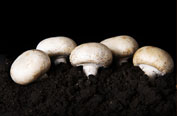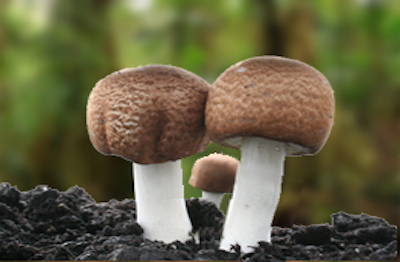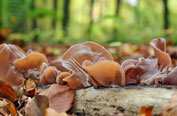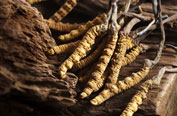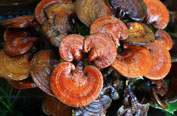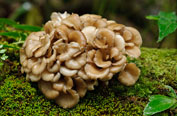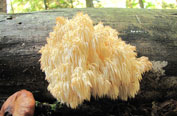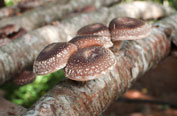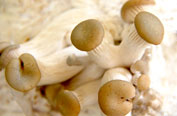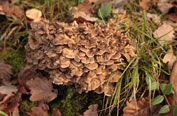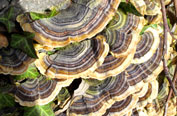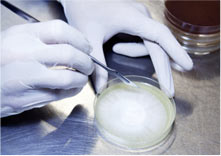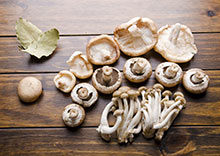
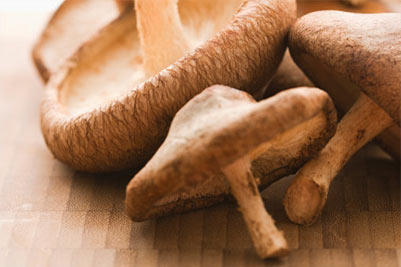
FAQ
What tips should I know when working with / applying mycorrhizae?
The main goal of any mycorrhizal application is to get the product in the root zone of the plant. Since the mycorrhizae germinate in the presence of root exudates this is the key to successful inoculation. We have formulated our products in many different forms (granulars, powders, liquids, etc) to be easier for you. You know your equipment and soil the best. We are here to help if you have questions.
Mycorrhizae are probably more hardy than you might think, which has helped them to survive the last 450 million years.
There are some conditions to avoid: High temperatures of 140 degrees F and above can kill the mycorrhizae, which could be important to other manufacturers that might be looking to process the mycorrhizae into pellets for example or to people who want to use before Composting. Not all, but certain Fungicides can also damage mycorrhizal fungi. Please see our List of Fungicides and their known effects, to help you pick a mycorrhiza friendly fungicide. Mycorrhizal fungi actually attach and become part of the plant, they are not free living soil organisms, they require that symbiotic relationship, meaning they will stay with the plant for the life-cycle of that plant. When annual plants die, or a field is tilled, etc those mycorrhizae do not remain indefinitely, they die along with those plants.
High levels of available Phosphorous does not harm or kill mycorrhizae, but it can slow there progress. One of the main functions of mycorrhizae is to extract phosphorous. However, if there is already an over abundance of phosphorous available to the plant the mycorrhizae have to reason to "go to work" so to speak. This means they won't be performing some of their other important tasks like water uptake, and other nutrient extraction as well. You really want to keep available phosphorous at a low to moderate level. This is most important at the time of inoculation when those spores are trying to attach to the plant and assimilating to their new environment.
Do Mycorrhizae Fungi Help with Nutrient Extraction in a Hydroponic Environment or are they more relevant in soil/organics where nutrients need to be broken down frist in order to become available?
Mycorrhizae fungi are effective in hydroponic applications. We have looked at dozens of root samples from hydro operations that used MycoApply® products. Plants were grown in sterile media and they were loaded with mycorrhizae following inoculation. Inoculation was performed in two ways. Physical mixing of the dry product with the sterile growing media or rock wool and injection of liquid as a spray or pumped into the drench of the media. It is such a simple systemwith all the roots and all the inoculum in a close space and results in great colonization and little competition from other organisms. A main function of mycorrhizal fungi is phosphorous uptake. It is important to have good colonization and good mycorrhizal fungi "web" already established before you go into flowering / fruiting.
What is the Difference Between Endo and Ecto Mycorrhizae?
Endohas an exchange mechanism an the inside of the root (and the hyphae extend outside the root). Endo mycorrhizae form mostly with green leafy plants and most commercially produced plants. Examples: Most Vegetables, Grasses, Flowers,Shrubs, Fruit Trees and Ornamentals.
Ectolives only outside of the root. Ecto mycorrhizae form mainly with Conifers and Oaks. They are required only for a small percentage of woody type plants/trees.
What are Mycorrhizal Fungi?
"Mycor" – "rhiza" literally means "fungus" – "root" and defines the mutually beneficial relationship between the plant root and fungus. These specialized fungi colonize plant roots and extend far into the soil resource. Mycorrhizal fungal filaments in the soil are truly extensions of root systems and more effective in nutrient and water absorption than the roots themselves.
What plants form specialized roots with mycorrhizal fungi?
Over 90% of the world’s plant species form mycorrhizae and require the association for maximum performance in non-artificial conditions.
How do mycorrhizal fungi increase nutrient uptake?
These fungi increase the surface absorbing area of roots 100 to 1,000 times thereby greatly improving the ability of the plants to utilize the soil resource. Estimates of amounts of mycorrhizal filaments present in soil associated with plants are astonishing. Several miles of fungal filaments can be present in less than a thimbleful of soil! But mycorrhizal fungi increase nutrient uptake not only by increase the surface absorbing area of roots, they also release powerful chemicals into the soil that dissolve hard to capture nutrients such as phosphorous , iron and other “tightly bound” soil nutrients. This extraction process is particularly important in plant nutrition and explains why non-mycorrhizal plants require high levels of fertility to maintain their health. Mycorrhizal fungi form an intricate web that captures and assimilates nutrients, thus conserving the nutrient capital in soils. In non mycorrhizal conditions much of this fertility is wasted or lost from the soil system.
What other activities do mycorrhizal fungi do?
Mycorrhzial fungi are involved with a wide variety of other activities that benefit plant establishment and growth. The same extensive network of fungal filaments important to nutrient uptake is also important in water uptake and storage. In non-irrigated conditions, mycorrhizal plants are under far less drought stress compared to non-mycorrhizal plants.
Mycorrhizal fungi also improve soil structure. Mycorrhizal filaments produce humic compounds and organic “glues” (extracellular polysaccharides and glycoprotiens) that bind soils into aggregates and improves soil porosity. Soil porosity and soil structure positively influence the growth of plants by promoting aeration, water movement into soil, root growth, and distribution. In sandy or compacted soils the ability of mycorrhizal fungi to promote soil structure may be more important than the seeking out nutrients.
Can I use pesticides when I use mycorrhizal inoculants?
Fungicides:
Many commercial fungicides are compatible with Mycorrhizal fungi, but not all. Some fungicides are known to damage or suppress these organisms.
Fungicides applied as seed treatments, even those indicated on our List as “avoid use” are usually compatible with Mycorrhizal inoculants because they provide a small amount of fungicide that isquickly removed from the root zone. Foliar applications of non-systemic fungicides are compatible with mycorrhizal inoculations. For soil drench utilization of fungicides, the application should be done 2 weeks before the inoculation or 3-4 weeks later. If a fungicide known to adversely affect mycorrhizal fungi is applied after mycorrhizal colonization has been achieved, the host plants temporarily lose external filaments, but because mycorrhizal structures have already been established internally in the root, they will quickly reproduce those external filaments that were lost.
Herbicides:
Most herbicides are generally considered compatible with mycorrhizal inoculation but several have yet to be specifically tested for mycorrhizal compatibility.
Insecticides, nematicides:
Insecticides and nematicides are generally compatible with Mycorrhizal fungi but several have yet to be specifically tested for mycorrhizal compatibility.
Don’t soils already contain mycorrhizal fungi?
Undisturbed soils are full of beneficial soil organisms including mycorrhizal fungi. Research indicates, however, many common practices can degrade the mycorrhiza-forming potential of soil. Tillage, fertilization, removal of topsoil, erosion, site preparation, road and home construction, fumigation, invasion of non-native plants, and leaving soils bare are some of the activities that can reduce or eliminate these beneficial soil fungi. Reintroducing mycorrhizal fungi in areas where they have been depleted can dramatically improve plant establishment and growth
Many routine nursery practices, such as fumigation and dousing with high levels of water and nutrients, produce non-mycorrhizal plants. When high levels of fertilizer and water are provided for non-mycorrhizal plants, they can thrive in this artificial growing media, but they are ill prepared to survive the eventual outplanted condition.
What types of mycorrhizal products are available?
Certain mycorrhizal spores or “seeds” of the fungus have been selected for their growth enhancing abilities. MycoApply® products come in granular, powder, gel and liquid forms. When applied, the spores of mycorrhizal fungi spread through soil colonizing plant roots and work to produce vigorous root systems and plant growth. The yield enhancing attributes of mycorrhizal fungi have co-evolved over millennia and has been the focus of 40 years of intensive research. Now, growers, landscapers and homeowners can apply the miraculous relationship of plant and mycorrhizal fungi and improve plant growth the natural way.
How do you apply these mycorrhizal fungi?
Mycorrhizal application is easy and requires no special equipment. The goal is to create physical contact between the mycorrhizal inoculant and the plant root. Mycorrhizal inoculant can be sprinkled onto roots during transplanting, worked into seed beds, blended into potting soil, “watered in” via existing irrigation systems, applied as a root dip gel or probed into the root zone of existing plants. The type of application depends upon the conditions and needs of the applicator.
Is mycorrhizal inoculation expensive?
Mycorrhizal inoculation is inexpensive. Typically for small plants the cost ranges from less than a penny to a few cents per seedling. For larger plants, more inoculum is needed and costs are higher.
Why is Diversity Important?
Natural areas generally contain an array of mycorrhizal fungal species. The proportions and abundance of mycorrhizal species often declines following any disturbance. Not all mycorrhizal fungi have the same capacities and tolerances. Some are better at imparting drought resistance, others are more adept at taking up nutrients. The diversity of mycorrhizal fungi formed by a given plant increase its ability to occupy diverse below ground niches and survive a range of chemical, biological and physical conditions.
MycoApply® mycorrhizal products contain the most diverse and effective strains of mycorrhizae available anywhere. By utilizing a robust mix of beneficial soil organisms, plants can survive and thrive the way nature intended.
How hardy are mycorrhizae?
Shelf life of our standard products are 2 years with a 10% decrease in viability in year 3. Cold temperature, even freezing, does not affect the viability of mycorrhizal propagules that are most commonly used as inoculum. High temperatures, above 140 degrees F, damage mycorrhizal propagules and should be avoided.
Once the propagules are mixed with the soil, they remain in a dormant state until there is root activity. Mycorrhizal propagules germinate in the presence of certain root exudates. Once the spores germinate and attach to the root system, the mycorrhiza will remain with the plant for the life-cycle of the plant. Plants growing on stressed sites or frequently disturbed sites may require several inoculations.
It takes 2-12 weeks for the mycorrhizal propagules to form the mycorrhizal relationship when applied to an active root system. Hyphal activity in the soil is often present in the soil before an abundance of arbuscules and vesicles form within the roots. The length of time it takes to form an abundant mycorrhizal "colony" depends upon the level of root activity and soil temperature.
Should I feed Mycorrhizae Carbs? (e.g. molasses?)
Molasses and other carbs are good for feeding bacteria and other types of fungi. But you don’t need to feed mycorrhizae. That’s missing the point. The plant feeds them! It’s the sugars from the plant roots that feed the growth of mycorrhizae and mycorrhizal filaments. (There are synthetic compounds that cause mycorrhizae to germinate, but they are unnatural, expensive and not commonly available.) The use of organic fertilizers, kelp, humic acids and other carbon sources are very compatible with the use of mycorrhizal fungi.

